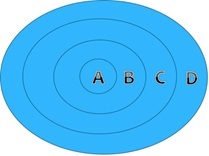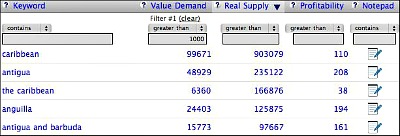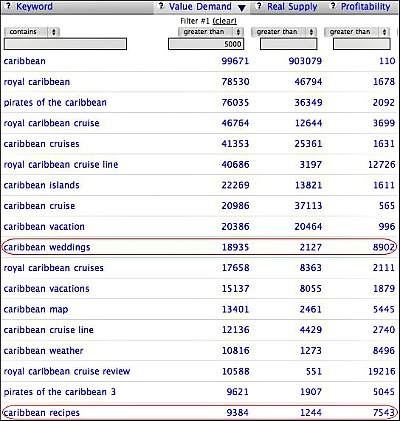| Back to Back Issues Page |
 |
|
Issue #024 -- Week 19/10/14-25/10/14 October 27, 2014 |
Hello,Greetings and General InformationA warm welcome to our new subscribers! I wish you will find My English Club fun and instructive and I look forward to welcome you as a new valued member soon. Read, learn and communicate around the world! Please feel free to contribute to these pages when you have a minute. They are meant to be a platform for exchanging ideas, stories and opinions - an ideal medium for practicing your English, which should be used to the full. Together, let's bring it alive, let's make it the welcoming community you wished for, when you joined. You and your friends can subscribe individually through the form on My English Club. If anybody mentions to you that they are interested in receiving it, please tell them this - many thanks. Also, they can read the previous issues on Back Issues for English Corner E-zine. Month 2 ~ Lesson 9We started studying three subjects this month: pronunciation and grammar for improving your communication skills, as well as website design and development, for applying your English in practice once you get skilful in English and website building. You will find our past lessons as follows: Pronunciation: Pronunciation ~ Vowel and Consonant ContrastsThis is another pronunciation trap for speakers of English as a foreign language and many of my students are struggling with saying the right thing when in their own language they pronounce one sound instead of another. Let me give you an example: Many Chinese people pronounce /l/ instead of /n/ and vice versa… /n/ instead of /l/:
I never liked to be told “Lice to meet you”, when ‘lice’ is that horrible parasite that lives and grows in one’s hair, which monkeys keep clearing from their babies’ heads all the time…
Equally, people say
- ‘lever’ instead of ‘never’: “I shall lever nie to you…” In Saudi Arabia I frequently hear a /p/ pronounced as /b/, as in: These mistakes occur because of the consonant contrasts between certain consonants that are very similar in pronunciation, hence people the sound that’s easier or more familiar to them.
For example I had a young student in China (8 years old), who couldn’t pronounce the sounds /g/ and /c/ - he would say /d/ and /t/ respectively. So he wouldn’t say ‘cat’ – he would say /tat/, etc. and he would do this with Chinese words as well, not just in English. When I pointed this out to his mum, at the end of our first lesson, she said casually “Oh, yeah…”, nodding her head, as if to confirm that she knew about this speech defect in her child. I was amazed! Did they not care to repair this pronunciation flaw? They explained to me that they couldn’t, with the help of an interpreter. You couldn’t imagine the child’s enthusiasm when, by the end of his third lesson with me, he was proudly showing me how we pronounce /c/ and /g/ from the throat and he
was doing it correctly as well. Poor kid, only needed to be made aware of this and shown the right way of uttering the sounds!
OK, this being said, let’s look at the sounds that are frequently mistaken in our speech, depending on the influence of your first language and flaws you bring with yourself to start with.
We shall start with the vowel contrast and finish with the consonant contrasts, as follows:
Vowel contrasts
long a \eɪ\ – short e \e\ bait – bet lace – less pain – pen rake – wreck sale – sell long e \iː\ – short i \ɪ\ deep – dip feet – fit peel – pill seat – sit teen – tin short i \ɪ\ – short u \ə\ dill – dull fizz – fuzz knit – nut lick – luck pin – pun short o \ɑ\ – short u \ə\ box – bucks doll – dull lock – luck long – lung not – nut long o \oʊ\ – medium u \uː\ float –
flute rode – rude sow – sue tone – tune medium a \ɔ\ – ou \æʊ\ all – owl brawn – brown haul – howl laud – loud tall – towel bee – pea beg – peg bowl – pole buy – pie cave – gave class – glass cot – got curl – girl den – ten dip – tip dot – tot duck – tuck fault – vault ferry – very
\ˈferiː\ – \ˈveriː\
fine – vine
\ˈfaɪn\ – \ˈvaɪn\
folly – volley
\ˈfɑliː\ – \ˈvɑliː\
let – net
\ˈlet\ – \ˈnet\
light – night
\ˈlaɪt\ – \ˈnaɪt\
low – no
\ˈloʊ\ – \ˈnoʊ\
lull – null
\ˈləl\ – \ˈnəl\
sap – zap
\ˈsæp\ – \ˈzæp\
seal – zeal
\ˈsiːl\ – \ˈziːl\
sink – zinc
\ˈsɪŋk\ – \ˈzɪŋk\
sip – zip
\ˈsɪp\ – \ˈzɪp\
sue – zoo \ˈsuː\ – \ˈzuː\ Grammar ~ Using Grammar for Speaking/WritingBecause my present students need a quick course in writing and speaking, before their next exam in two weeks’ time, I shall focus our attention on this matter, but this will help anybody who wants to improve their communication skills – be they in writing or in speaking. Now, we know that each sentence we write/say reflects the three main choices we make in the process: (1) What to write about & what we want to accomplish by writing it; While we are at school, it is the teacher or the textbooks that dictate the subject or the propositional content you need to speak/write about. However, in real life it is YOU who decides what you want your writing to do, or what you want to say. That is the first one from the above list of three choices we make any time we speak or write. If you’re struggling with the second and third choice - don't worry. Rest assured that this can be improved by learning and practicing the effective and elegant use of words: For point (2) above, the choices you make for the actual words you're going to use depend on the level and the precision of your vocabulary and are called PARADIGMATIC choices; As for point (3) - how you put those words together is another crucial choice, called the syntax or SYNTAGMATIC choices. We can simply work around them, by calling them the WHAT and HOW of our sentences: WHAT words we choose for our sentences ==> this is our CONTENT HOW we combine them to say what we want to say ==> this is our STYLE At a later stage, we shall look at what exactly goes into a sentence in more detail. For now, let's just get the idea of it. Imagine four circles, one inside another, representing different kinds of meaning function and the different ways of organising these functions:
In fact, this category is only limited by our imagination. B -> Information, reality and belief = the sentence - here we distinguish between statements, questions and responses. We can have yes/no questions, open questions (what, who, where, when, why), questions about alternatives, questions with positive or negative bias; responses to statements; requests for repetition, etc. In fact, this category is also sufficiently large to explore along many months of pleasurable studying. C -> Mood, emotion and attitude = utterance. We need to consider this aspect, because language is more than giving and receiving information. It is communication between people. It often expresses the emotions and attitudes of the speaker, who often uses it (the communication) to influence the attitudes and behaviour of the listener/reader. D -> Meanings in connected discourse = discourse or text. We cannot consider communication in isolation. We communicate so that we put meanings together and present ideas. We make transitions between ideas, we change the subject of our communication, we add or subtract ideas, depending on the listener/reader's reactions, we reinforce our ideas, by using others that sustain them, we explain, summarize, generalize, reformulate, etc. All this is the scope of what's called communicative grammar, the type of grammar that tries to answer the question: 'Given that I want to communicate certain meanings in certain situations or contexts, which grammatical forms and structures can I use?' Going back to our discussion on CONTENT and STYLE, we can use a metaphor like 'Style is the dress of thought'. You have a naked body (content) and you dress it one way or another, in order to best present it in the context and to the audience it is meant for. Starting from next time, we shall look into how we deal with point D – the communication of ideas, the transitions we create between them and how we do this practically by combining our words correctly and appropriately, according to the information we need to convey and the mood or emotion we want to expose to our reader or listener. Website Design with SBI! ~ The Filter ToolSo, how does the Filter tool work exactly? When you click on the Filter button, the filter boxes and the corresponding column of numbers appear just below the column labels. If you enter 1000 into the Value Demand filter field when the default filter is "greater than", this automatically delivers all keywords that have Demand greater than 1,000.
If you remember, we are selecting the best from the 3 Site Concepts at this stage, so it would be useful to know how many of these words come from each Seed Word. That's easy to find out. See the Keyword column?... In total we have 152 words in this Keyword List (KWL), but if you type each Seed Word into the filter field in that column. Use "contains" (the default) to find the words that contain each Seed.
For each potential Site Concept, you now see the potential strength and depth. In other words, you know how many keywords there are with Demand greater than 1,000 for each potential Site Concept Keyword. This is a common pattern. The higher the Supply (in Action #1, if you remember from our last lesson), the more keywords you'll find with higher Demand, here in Action #2. Your job is to find a Site Concept Keyword with a Supply range that is winnable and with a reasonable number of words with good Demand (greater than 1,000). A Seed Word with too many keywords having Demand greater than 1,000 ("caribbean" in this case) is likely confirming that the niche is too big (except in the unusual situation where Supply was relatively low -- then you have a real winner!). In this case, it's quite possible that there is a good, winnable sub-niche located somewhere within that bigger niche. Now we shall run the Value Demand filter for Caribbean words (enter "caribbean" in the Keyword filter box, using "contains") with a Demand greater than 5,000. Then scan that list of keywords, sorting by Value Demand like this...
By now, you can start to see the power and flexibility of this approach. You not only can rule out niches that are too narrow, you can find new sub-niches in niches that interest you, but are too broad to consider entirely. Review of What We've Done in Phase 1 1. We sorted by Real Supply to do a quick check of the winnability of our 3 potential Site Concepts. "Caribbean" worried us, but we found a couple of other potential winners. 2. Next, we filtered by Value Demand (greater than 1,000) to get a quick idea of the depth (number of keywords with high Demand) and the intensity (how high) of the Demand for each of the 3 Site Concepts. Next time we'll start looking into Phase 2 of the stage of finding the best Site Concept. Although this looks quite technical, it is probably the most important stage in designing your website. Without choosing the best website subject for you, you are going to be doomed to build a website you won't particularly enjoy, or EVEN WORSE, you'll abandon your efforts after a short while, thus wasting your time anf effort for nothing. This Is It, Folks!I hope you find this information useful and not too confusing. Even though you're in the stage of building on it, have patience at this point in your learning and you'll be able to reap the fruit of your work later on, whichever aspect of our lessons you are concentrating on. Please feel free to comment and suggest your ideas by replying to this email - I look forward to hearing from you. OK, I wish you all a good weekend and a great week ahead. Have fun, as always! Lucia da Vinci Founder of My English Club |
| Back to Back Issues Page |



